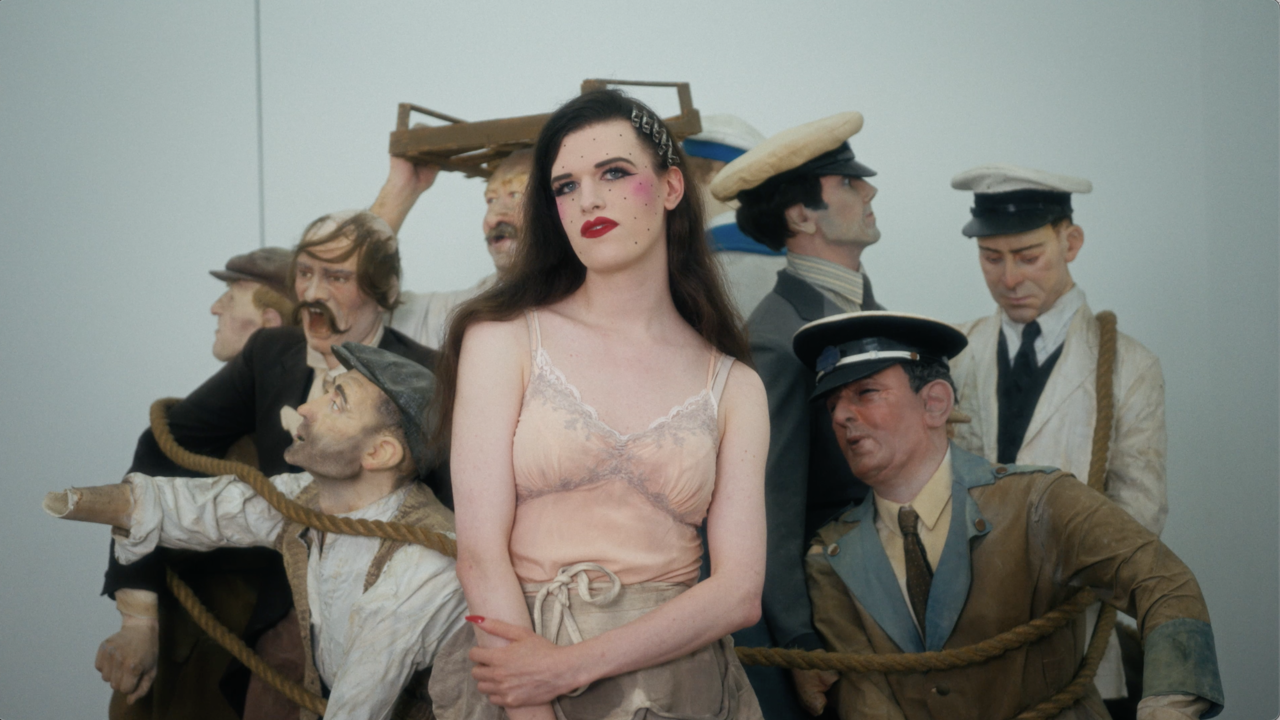Kitty Kraus
Identical dimensions and precarious constellations
Identical dimensions and precarious constellations

Standing amid Kitty Kraus’ installations, you find yourself in the presence of things that wouldn’t normally take up much space – panes of glass, items of clothing, light bulbs – but which have suddenly expanded by means of the artist’s crafty, hand-crafted interventions. Each work in the Berlin-based artist’s series of sculptures ‘Untitled’ (2006–ongoing) is composed of two rectilinear panes of glass. These transparent assemblies seem to perform an ethereal balancing act with the walls and floor of the gallery, and with each other.
Though each sculpture bears identical dimensions (one shorter piece of glass is paired with one longer piece, as if to suggest a torso and legs), they are installed in different precarious constellations, like a set of dysfunctional tables and shelves. It’s not only their impractical angles and fragile material that lends these pieces their internal tension; the glass panes are only held together with strips of ordinary double-sided tape. As much as you may want to inspect these curious constructions more closely, their tenuous transparent forms and sharp edges require you to navigate them cautiously and from some distance.
Like someone who unwittingly blocks your path, they serve to remind you that you might be too big for this space, or moving too quickly within it. In addition to forging fragile bonds between plates of glass, Kraus also performs modest feats of disassembly. For her series of deconstructed suits (‘Untitled’, 2006–ongoing), the artist purchases men’s suits – black, navy, sometimes pin-striped or even white – and carefully undoes their seams by hand. This delicate act of reverse engineering seems like an investigation into the garments’ construction and their sturdiness, by focusing on their most vulnerable points. Kraus then places them in rectangular swaths of fabric on the wall and floor in bilateral compositions that echo those of her glass-paned sculptures. When the black suits are mounted to the wall, the slightly wavering pinstripes in the dark cloth make clever, or perhaps sardonic, knock-offs of Frank Stella’s series of ‘Black Paintings’ from the late 1960s.
Though Kraus does not admit to making such direct art-historical references, preferring to think of them as accidental, her works consistently echo the familiar forms of Minimalism – Donald Judd’s rectilinear shapes, Dan Flavin’s fluorescent lights – though Kraus’ practice is minimal even by the standards Minimalism. Her primary materials are by nature frail or illusory: glass, fabric, ice, ink, lamps, light bulbs, mirrors, heat. She fabricates simple equations out of these physical elements to create discreet, even self-effacing, reactions. But Kraus’ works don’t disappear into Conceptualism either. Though they may be insubstantial, they aren’t entirely dematerialized, nor are they particularly cerebral.
This is especially true of another ongoing untitled series of works, in which she encases the glass portions of light bulbs in blocks of ink-stained ice. The smaller ice lamps – single household bulbs housed in tiny, frosty black cubes – are compact, self-contained systems that resemble improvised explosive devices or dud firecrackers; the larger versions, which contain neon tubes, start out as hefty cubes that uncannily recall cement blocks. After the lamps are plugged in, the ice block inevitably begins to melt and, within hours or days, the initial sculpture transforms into something dissipated and forlorn – a lone, black cord attached to a bare, illuminated (or sometimes broken) bulb on the floor, trailed by inky, swirling pools of stained water. It is these topographic puddles that refuse to let the ice lamps become an act of total dematerialization, instead pushing them toward deliberate, though roundabout, attempts at painting.
Originally Kraus tried freezing the lamps in ice without ink – when she discovered the miniature landscapes created by the water and dirt on the gallery floor, she began adding ink to the ice to make the puddles more visible. The slowly decaying forms of Kraus’ ice lamps may look like negligible accidents or minor manufacturing errors, but these are systems carefully built to fail. To create these malfunctioning mechanisms, the artist constructs precisely scaled wooden boxes sealed with silicone that she intermittently fills with water as they gradually freeze, to keep the expanding ice from breaking the bulb – watering, nourishing and tending it like a plant before leaving it to melt. Kraus’ more recent ‘mirror lamps’ (2007–ongoing) are a step toward spectacle, compared with the modesty of her other works. At first these lamps – mirrored cubes illuminated from inside with small gaps at the seams, which cast complex patterns of light around the room – seem to allude to the transcendent beauty or optical magic of Olafur Eliasson’s mirror pieces or his frequent use of reflected light.
But Kraus’ optical devices are self-effacing and transitory. Like the ice lamps, they are auto-destructive devices, orchestrating an accident that will leave unforeseeable formal traces. Though some are made with 100-watt bulbs that function as lamps, other versions are made with 500-watt bulbs that cause the cubes to explode from the heat within a few minutes. Like all of Kraus’ works, they appear to strive toward being invisible, but they’re reluctant to leave no trace at all.






















